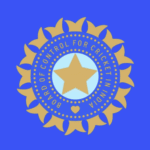Superstar Salman Khan made an appearance on the inaugural episode of Season 3 of the Great Indian Kapil Show. While Salman appreciated the comedic performances by Sunil Grover, Kiku Sharda, and Krushna Abhishek, he also engaged in a meaningful discussion with Kapil Sharma, Navjot Singh Sidhu, and Archana Puran Singh. During the show, the Sikandar actor candidly spoke about his current health challenges and explained his decision to stay unmarried.
In Kapil Sharma episode, Salman Discussed in a very informal manner the various ailments and challenges he is currently facing. When host Kapil Sharma inquired about his thoughts on marriage, the actor elaborated on the difficulties of accumulating wealth and ease with which a woman could acclaim it all following a divorce. He mentioned that at the age of 59, he continues to work despite numerous health concerns and feels he lacks the capacity to begin anew, should the ‘wife’ choose to take ‘half of his money.’
“I am breaking my bones on a daily basis; my ribs are fractured, I am continuing to work despite suffering from trigeminal neuralgia, and there is an aneurysm in my brain. Additionally, I have an AV malformation, yet I persist in my efforts,” Khan stated.
Also he said “All of this is occurring in my life. And the moment their mood soured, they took away half of what I had. If this had happened when I was younger, it would have been acceptable – I could have earned it all back. But now, starting over again..”
Trigeminal neuralgia:
Trigeminal neuralgia is a long-lasting nerve disorder that results in abrupt, intense facial pain, frequently likened to an electric shock. This condition impacts the trigeminal nerve, responsible for conveying sensory information from the face to the brain. The pain usually manifests on one side of the face – specifically around the jaw, cheek, or eye – and may be provoked by ordinary activities such as brushing teeth, chewing, or even exposure to wind.
Brain aneurysm:
Brain aneurysm is a bulge that occurs in a weak section of a blood vessel located in or around the brain. The majority of aneurysms are small and do not lead to complications. However, a ruptured brain aneurysm poses a significant risk to life. Typically, the initial indication of a ruptured brain aneurysm is an intense headache – often described as the most severe headache one ever experienced. It is crucial to seek medical attention promptly if you exhibit symptoms indicative of brain aneurysm rapture.
AV Malformation:
An arteriovenous malformation (AVM) is an unusual entanglement of blood vessels resembling a bird’s nest. This entanglement consists of arteries that typically supply blood to the brain and veins that usually drain blood from brain tissue.
Blood circulates through your body in a well-organised closed circuit of blood vessels. Arteries transport oxygen-rich blood from the heart to the brain and other organs and tissues throughout the body. Conversely, Veins carry oxygen- and nutrients-depleted blood, along with waste products, back to the heart and lungs.
Typically, this exchange occurs in the capillaries, where the smallest units of arteries and veins interconnect. In the case of an AVM, the capillary “bridge” that connects arteries and veins is absent. The absence leads to high-flow arterial blood connecting directly to veins that are not accustomed to elevated blood pressure. Consequently, the abnormal connection between the artery and vein in an AVM can result in vessel rupture and bleeding within the brain.







